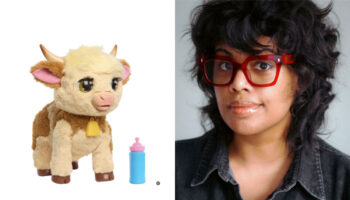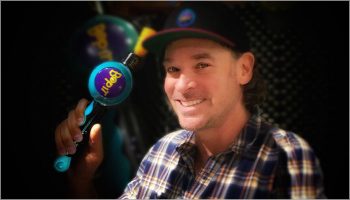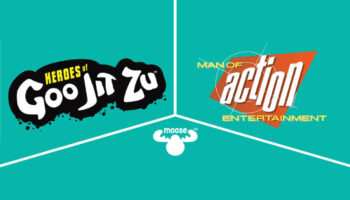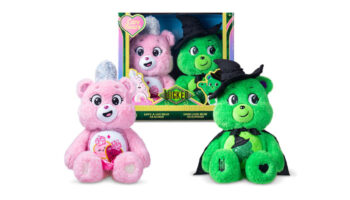Sushi Go creator Phil Walker-Harding on accessibility, creativity and the future of his sushi series
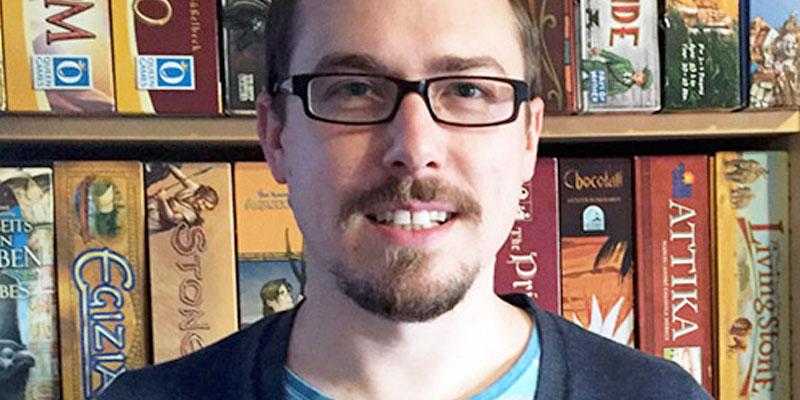
With a simple to grasp card drafting mechanic, cute artwork and a splash of wasabi, Phil Walker-Harding announced himself to the gaming world in 2013 with Sushi Go.
The Australian designer had been self publishing his creations since 2007, but it was when Gamewright unleashed Sushi Go into the world that Walker-Harding was able to make game design a larger part of his career.
Since then, he’s released a raft a popular titles including the Spiel-de-Jahres nominated Imhotep, Sushi Go’s equally lauded follow-up Sushi Go Party and this year’s furry crowd-pleaser, Bärenpark.
We caught up with to discuss his accessibility-focused approach to game design, the origins of Sushi Go and why (if anyone from Warner Bros’ licensing team is reading) we could one day be seeing Phil Walker-Harding’s Casablanca: The Board Game.
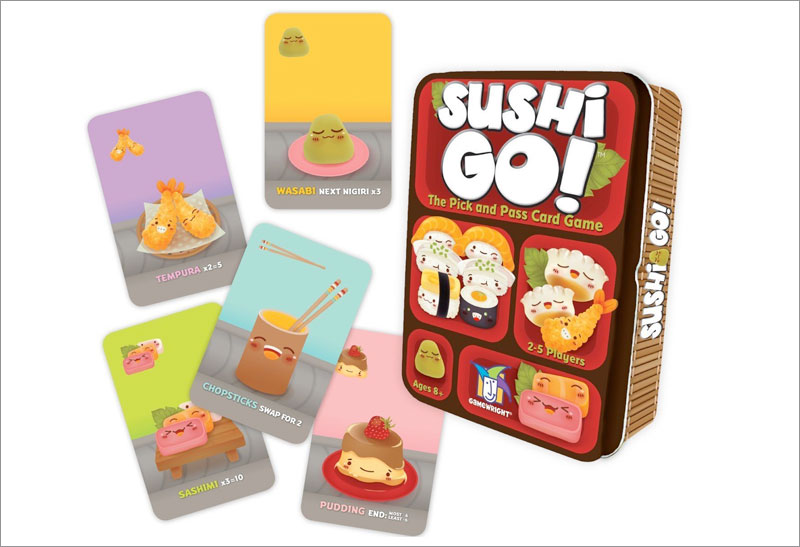
When did you first become aware that you could make a career out of designing games?
When I first started designing I was also self-publishing my games, and it was purely a hobby. I really enjoyed being able to take my designs from prototype to finished product on this small scale. Gradually, some of my games became more well known and picked up by bigger publishers, which was really exciting. But it wasn’t until Sushi Go started selling well with Gamewright that I really saw a real return.
Over a period of a few years I was able to make game design a bigger part of my week as sales of a few titles grew. I am still pretty amazed that I get to design games, and am very thankful for how things have turned out!
How would you sum up your approach to design? Is there a common element which is shared by all of your creations?
I would say I strive for accessibility. I try to design games that have simple and intuitive rules. I want to remove as many barriers as possible from the players’ ability to act meaningfully in the game and then see and enjoy the results of their actions.
I also have a tendency to “boil things down” and try and get to the heart of a particular mechanism or system. So I tend towards smooth and simple game structures, rather than adding lots of detail to the gameplay.
How do you stay creative?
That’s a tough one. I think playing new games always gets my brain going and is a great way to be thinking about fresh ideas. So I try and do that as regularly as I can. More generally, I think having downtime is important for any creative process. So taking some time away from a project and just going for a walk or working on something else can sometimes be essential.
As you say, Sushi Go was one of your first games to really strike a chord with a mass audience. Where did the idea for Sushi Go come from and why do think it really hit home with so many people?
Sushi Go came from playing and loving other pass-drafting games like Fairy Tale and 7 Wonders. I wanted to make a game that featured this mechanism with as few other elements in the way as possible. I think there is something really inherently fun about this form of card drafting so I wanted to really showcase it in a design. Once I got to the point of choosing a theme, the idea of a sushi train came to me right away, as they kind of feel like something is being passed around the table.
I think the game has done well because people love sushi and the really cute artwork! Although hopefully they enjoy the gameplay too! The game is easy to learn and creates some fun tension and surprise with simple rules, so I think that is part of it.
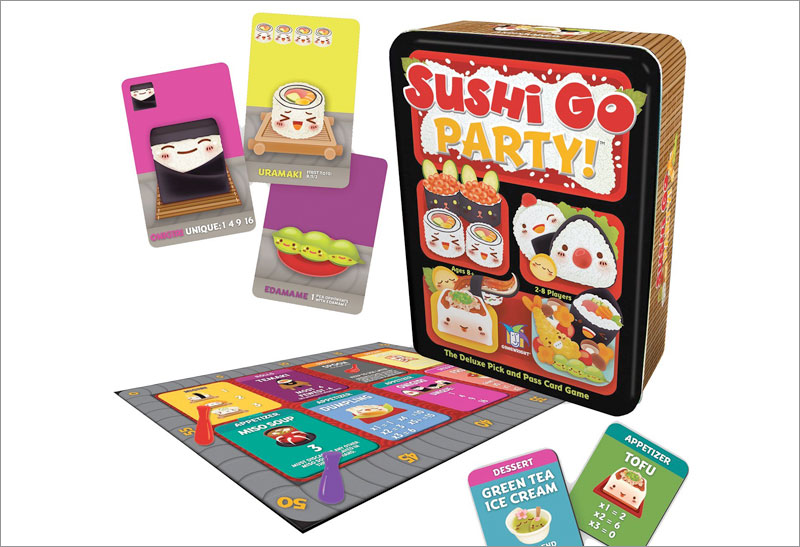
You returned to the concept for Sushi Go Party. What spurred the return and do you think there’s scope for another game in the Sushi Go series?
I really wanted to make an expansion for Sushi Go, but I also thought a larger standalone product that felt more like a board game could work too. At some point the two ideas merged together and I decided to do a sequel that felt like the original game but with a load more content. The massive setup variability of Dominion was of course an inspiration, and I set out trying to come up with as many different types of cards as possible. This was a fun design challenge but also a lot of work!
I have recently finished another game in the sushi series, but can’t say exactly when it might see the light of day yet! There are also a couple of brand new cards in the recently released German edition of Sushi Go Party.
Are there any of your other games that you’d like to return to for an expansion or sequel?
New expansions for Imhotep and Cacao have just been released. They were a real challenge to get right, but very satisfying to complete. I am also toying around with an expansion to Bärenpark right now. So I have been pretty lucky to get to work on expansions for my games! But I have always wanted to do a full board game sequel to Archaeology, but nothing has really quite clicked on that project.
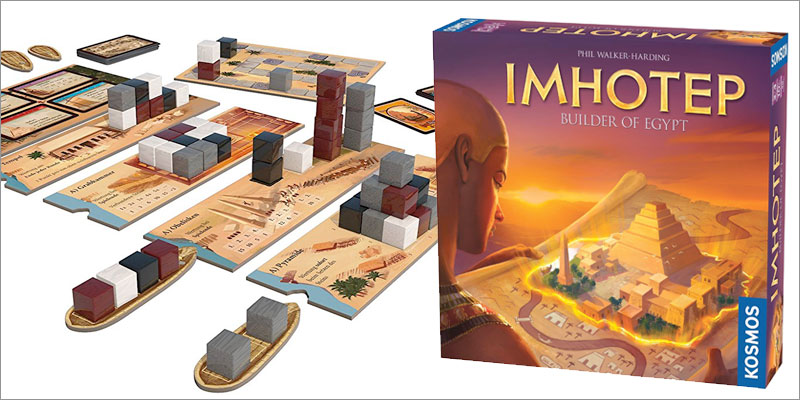
What for you makes for a perfect publishing partner?
It is important to me that a publisher has an active and collaborative approach to developing the design and doing some fine tuning of it. It is great when they have a drive to make the game as good as it can be.
It’s also really nice to gel with a publisher’s philosophy or approach to games. For example, Sushi Go was a perfect match with Gamewright’s passion for family card games, and I think Abacus absolutely understood the feel and aesthetic of Cacao. I also really value good communication. Living in Australia, I am a long way from most publishers so I can sometimes feel a bit out of the loop!
What comes to you first? A game’s theme or mechanics?
As most of my games are quite simple, it is pretty common that a mechanism comes to mind first. For example, a way to manipulate a piece or play a card. The simpler the game, the less the details of theme are represented in the gameplay, so it is more possible to try a few different themes with a particular set of rules.
I should also say that there is another way designs sometimes get started for me. I think about an experience I would like the players to have. It might be a type of social interaction or a particular moment of surprise or resolution during the game. I then set out investigating what sort of mechanisms and themes might make this possible.
There are so many games around; I would imagine it’s difficult to come up with truly original game concepts. How do you balance being inspired by other games with trying to create something unique?
I think all designers are inspired by each other and by specific games as well. For me, I always ask myself if a design I am working on would bring anything new to its genre, or would people always just choose to play one of the existing classics?
I don’t have much desire to just go over the same ground again. During playtests, I definitely listen if the design is being compared to existing games, or if it is providing a fresh type of gameplay for the players.
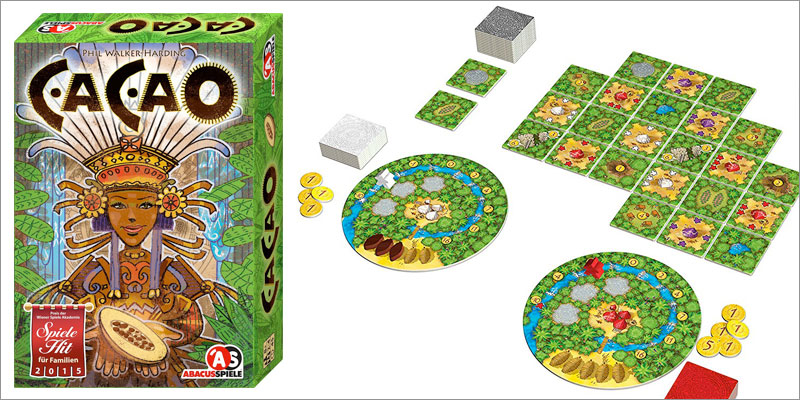
Licensing is becoming bigger and bigger in the tabletop world. Have you been tempted to create a game for an existing IP, or is there a movie or TV show out there that you’d love to adapt into a game?
I’ve never set out to make a game with an existing IP, mainly because it would be pretty disappointing if I was never able to release it! But if I was approached to work on a specific IP I think that could be lots of fun.
Some TV shows and movies that I love that could also make great games are Indiana Jones, The Goonies, Blade Runner and The Twilight Zone. One of my favourite movies is Casablanca, and I think there could actually be a really great game somewhere in that story!
Your big hit this year has been Bärenpark. Where did the idea for come from and did it take many forms before arriving at what we have now?
Inspired by games like Mosaix, The Princes of Florence, Arkadia and Patchwork, I decided to try and make a game all about fitting polyomino tiles together. For me, the funnest part of these games is when you get to place a piece in exactly the right spot and it fits together perfectly with your other tiles. So I tried to make these moments happen often and be a focus of the gameplay.
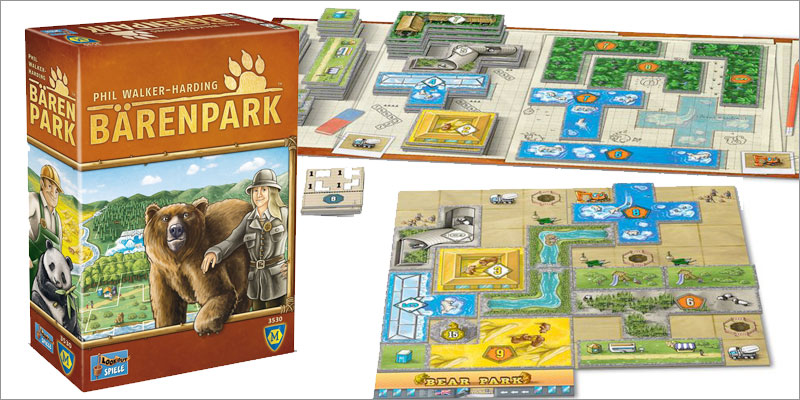
Using a set of shapes I went through many different game structures, and eventually settled on placing the tiles adjacent to each other on expanding boards. The idea of gaining things by covering up icons came from another much older design of mine. The prototype was originally called Wonderland and was about constructing a theme park. The publisher, Lookout, wanted a more unique theme, so they came up with a wildlife park for bears!
What can we look forward to playing from you next?
I have at least a couple of designs coming out next year that haven’t been announced yet, which I am really excited about! And hopefully something new in the sushi-verse is not too far away as well. I am also always working on various social deduction designs, as I would love to put something out in this genre – although it is proving a real challenge!





